|
Some of Darlaston's
councillors, and the roads that are named after
them: |
|
Two principal areas were redeveloped for municipal housing
in the inter-war years, the first to the south of Herberts
Park Road, on the western side Wolverhampton Street, and the
second at Rough Hay. Most of the roads were named after
local councillors. The roads south of Herberts Park Road
include Stanbury Avenue, Wells Avenue, Partridge Avenue,
Berry Avenue, Wiley Avenue, Bradshaw Avenue, and Sproat
Avenue. |
| Berry Avenue - William G.
Berry |
|
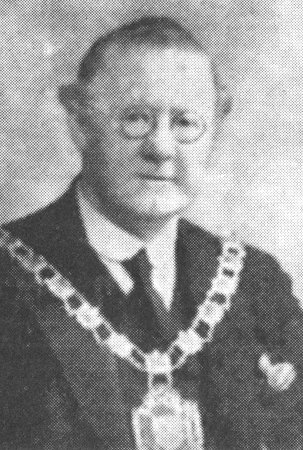
From a 1937 council election poster. |
William G. Berry was Conservative Councillor for All
Saints' Ward from 1928. He lived at 'Warley House', Slaney
Road, Bescot, and became Managing Director of Isaiah Platt
Limited.
He also became Chairman of Darlaston Council in 1936, and was
a Justice of the Peace. He served on many council committees
and was Chairman of the Parks, Cemeteries and Allotments
Committee.
He was treasurer of the Darlaston Poor Children's Outing
Committee, and of the All Saints' Ward old folk's treat, and
also organised Darlaston's first carnival in 1925.
He became a member of the Court of Referees, and of the
Juvenile Advisory Committee, and also the Wednesbury &
Darlaston Rotary Club. |
| Bradshaw Avenue - W. M.
Bradshaw W. M. Bradshaw became Labour Councillor
for the Central Ward. He worked in the insurance industry, before becoming
a publican, and Steward of Darlaston Labour Club. The road
was named after him in November, 1929. |
| Partridge Avenue -
Gilbert Wright Partridge |
|
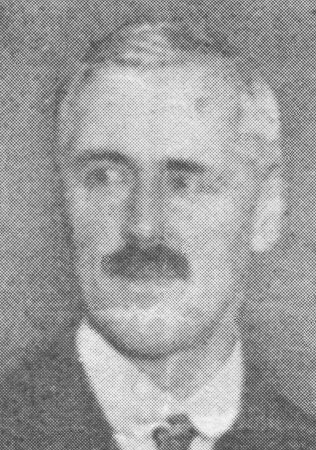
From a 1937 council election poster. |
Gilbert Partridge was Conservative Councillor of the
Green Ward, Chairman of Darlaston Urban District Council
from 1938 until 1942, and a member of Staffordshire County
Council, on which he represented the South Division of
Darlaston. He lived at Emscote, Bescot Road, and was
Managing Director of the family business, Alfred H.
Partridge & Company, in Heath Road. Products included tallow
candles, yellow and carbolic soap. He was Vice-Chairman of
Darlaston Council School Managers, a manager at Wednesbury
Boys' High School, All Saints' Intermediate School, Old Church
School, and
Bilston Girls' High School, and Chairman of the Child
Welfare, and Higher Education Committees. He was also Vice
President of the Darlaston Branch of the British Legion,
President of the Darlaston Division of St. John's Ambulance
Brigade, Treasurer of Wednesbury Conservative and Unionist
Association, and Secretary of St. Paul's Church Council.
He was greatly involved in the negotiations for the
expansion of Darlaston, when Bentley became part of the town
in 1934. Gilbert's father, Alfred H. Partridge had also been
Chairman of Darlaston Urban District Council. First in 1911,
and again from 1915 until 1919. |
| Sproat Avenue - William Henry
Sproat William Henry Sproat was Councillor for the
Central Ward in the 1920s and 1930s. He was a pawnbroker
with shops in New Street, and Pinfold Street, and was known
as 'Jimmy' after his father James, who previously ran the
business. Because of this the shops became known as Jimmy Sproat's. The road was named after him in November 1929. |
| Stanbury Avenue - William
Walker Stanbury |
|
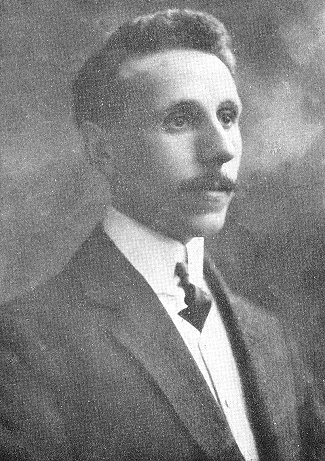
William Walker Stanbury in the early
1920s. |
William Walker Stanbury was councillor for Catherines
Cross Ward from the 1920s to the 1940s, being first elected
to the council in1919, and from April 1928 onwards. The road
was named after him in October 1930. He was well known in
the town because of his gents' outfitters and drapery shops
in Poplar House, and Victoria House, in King Street. William
was born at Durston in Somerset, and came to Darlaston in 1907
when he opened his shop in Poplar House, where he lived with
his wife Florence, before moving to ‘Wellsacre’, in
Wrottesley Road, Tettenhall.
He served on a number of council committees including the
Higher Education Committee, the Public Assistance Committee,
the Finance Committee, the Highways Committee, the Housing
Committee, the Child Welfare Committee, and the General
Purpose Committee.
He was also treasurer of the Unemployed Welfare Council
during the late 1920s and early 1930s depression, and a member
of the Public Assistance Committee for Wednesbury and
District, a member of West Bromwich and Staffordshire
Assessment Committee, and a member of the Poor Children's
Outing Committee. |
| He represented the town as a member of the Association
of Midland Local Authorities, and became Darlaston's
representative on the South Staffordshire Joint Smallpox
Hospital Board. He did a lot of work for the British Legion,
was President of the Darlaston Allotment Association, and
Chairman of the Darlaston Tradesmen's Association, that
helped to cultivate a friendly feeling between fellow
tradesmen, and looked after their interests. He became
Chairman of the council from 1933 until 1936, and in the
mid 1930s became a Justice of the Peace. |
| Wells Avenue - George
Wells. The road was named after Councillor George
Wells in October 1930. |
| Wiley Avenue - Frederick
George Wiley |
|
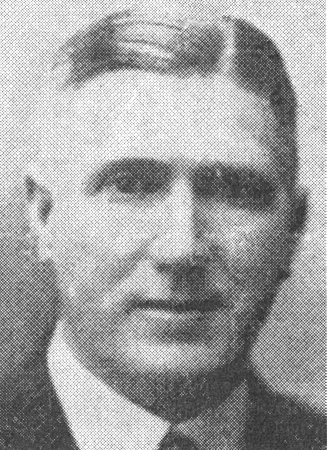
From a 1937 council election poster. |
Frederick George Wiley was Conservative Councillor for
the All Saints' Ward for many years. He was born in
Darlaston, and lived at 'Eversley', Avenue Road, Darlaston.
He worked at the family's business, George Wiley & Sons
Limited, at Eagle Works, The Green, Darlaston, and became Managing
Director of the firm, and also of Normalised Bolts Limited
of Midland Works.
He served on a number of council committees, and was a
member of Darlaston Conservative Club, and the Darlaston
Poor Children's Outing Committee.
He was also Vice-President of St. John's Institute in
Pinfold Street, and helped to organise the annual treat for
the aged folk of All Saints' Ward. |
| Rough Hay The streets in Rough Hay that were named after local
councillors include Hall Street, Lowe Avenue, Ince Road,
Brown Road, Biddlestone Place, Crawford Avenue, Wesson Road,
and Whitehouse Avenue. |
| Brown Road - Bob Brown
Councillor Bob Brown was a school attendance officer. He sat
on the local council from 1946 until 1958. |
| Biddlestone Place - T. F. Biddlestone
Mr. T. F. Biddlestone was Labour Councillor for the
Catherines Cross Ward in the 1920s and 1930s. |
| Crawford Avenue - George Henry Crawford |
|
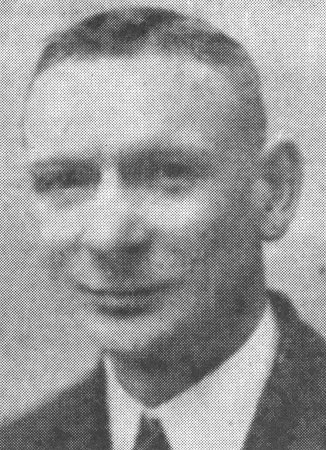
From a 1937 council election poster. |
George Henry Crawford was a school teacher who lived at
Peartree House, High Street, Darlaston. He was elected to
the council as Conservative member for All Saints' Ward in
1931 and served on many council committees, including the
Higher Education Committee, of which he was Chairman. He
was twice President of the Wednesbury Branch of the N.U.T.
and was a teacher and secretary of All Saints' Sunday
School, Darlaston. He also became Secretary of the Darlaston
Conservative Club Committee, and of the Wednesbury
Conservative and Unionist Association.
He was involved in the All Saints' Ward old folk's
Christmas treat, and the summer outing for the poor people
of the town.
In the First World War he fought in France, and
afterwards became treasurer for the Earl Haigh's Poppy Day
Appeal fund, and the Wednesbury and Darlaston Hospital Ball
Committee. |
| Hall Street - Cyril H.
Hall |
|
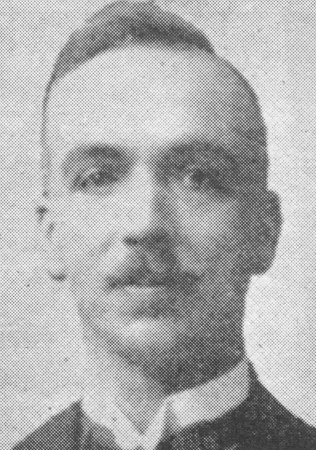
From a 1937 council election poster. |
During the latter half of the 1920s,
and the 1930s, Cyril Hall was Conservative Councillor for
the Green Ward. He lived at 34 Waverley Road, and worked as
a senior clerk at the LMS Railway’s goods department.
He served on many council committees,
was Chairman of the Free Library, Chairman of the Green Ward
Conservative and Unionist Committee, and Chairman of the
Midland Travel Club.
He greatly cared for the less well-off
people in the town, and organised the annual Whitsuntide
outing, which allowed many local people to travel to far-off
places, both at home and abroad.
He also helped to organise the
Darlaston Poor Children's annual outing, was secretary of
the Darlaston Unemployed Welfare Council, and the Personal
Service League, and founder of the Green Ward old folk's
Christmas tea. |
| Ince Road - Mr. Ince
Councillor Ince was a Labour Councillor who worked as a
builder. |
|

From a 1937 council election poster. |
Titus Lowe was councillor for the Central Ward in the
1920s and 1930s. He lived at Mill House in Dorsett Road, and
was a butcher with a shop at 4, 6, and 8 High Street. He
was a member of several council committees, and chairman of
the Fire Brigade and Ambulance Committee.
 |
| Wesson Road - Frederick Charles Wesson |
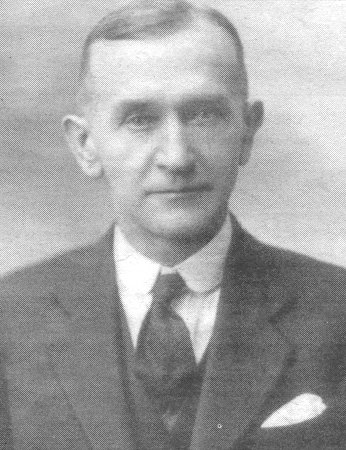 |
Frederick Charles Wesson was born in Moxley, and became
a director of the family business, W. Wesson & Company, at
Victoria Ironworks, Moxley.
He became a member of Darlaston Council after the First
World War, and was Chairman of the Council from 1926 until
1929.
He served on many of the council's committees, and became
chairman of the Housing Committee, and the Rating and
Valuation Committee, and was also Chairman of the Governors
of the Council Schools, the Parish Church School, and
Bilston Girls' High School.
He became a member of Staffordshire County Council, and
Justice of the Peace for Sedgley Division. |
| Whitehouse Avenue - John Whitehouse John Whitehouse
owned the Britannia Corn Mill, and had a well-known shop at
The Green, Darlaston. He was a baker and confectioner, and
represented The Green Ward in the 1920s and 1930s. |
 |
Return to
the
previous page |
|